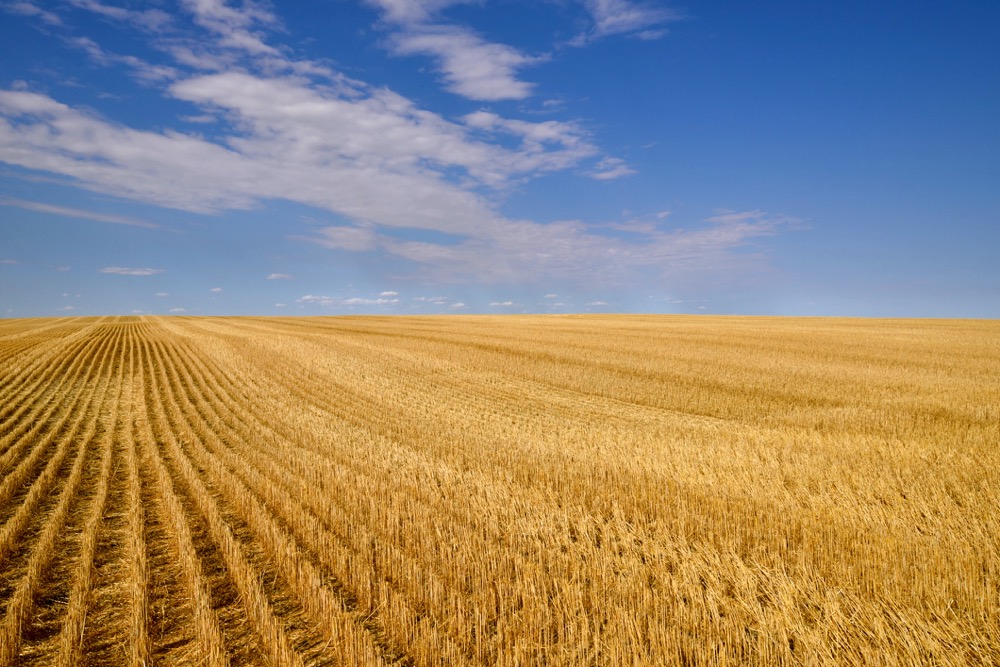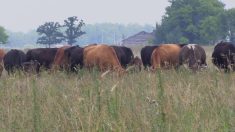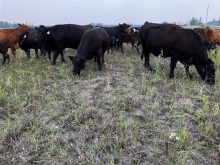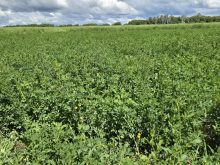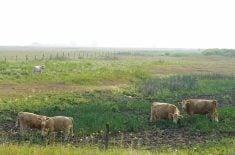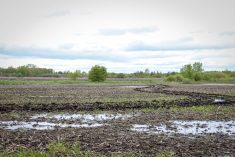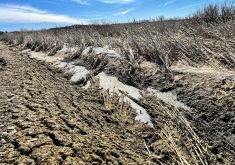As a severe summer drought tightens its grip on Manitoba, farmers are seeking adjustments to crop insurance coverage to help them salvage what they can from drought-ravaged crops.
A resolution passed at a recent Keystone Agricultural Producers (KAP) meeting called on the Manitoba Agricultural Services Corporation (MASC) to exclude a farmer’s Individual Productivity Index (IPI) calculations from standing crops cut for feed, instead of being combined.
- Read more: Federal government announces $100 million for AgriRecovery
Read Also

Manitoba Ag Days plans star-studded speaker lineup
Dragons’ Den panellist Arlene Dickinson among speaker series highlight for 2026 Manitoba Ag Days in Brandon, alongside slate of agriculture experts.
That way, KAP argued, cattle producers would have access to an alternative feed source while grain growers would not be penalized through crop insurance coverage for providing it.
“This motion is to provide incentive for farmers to reclassify their crops for alternative use by beef producers in drastic need of additional feed and, by doing so, it would be excluded from their IPI coverage,” KAP vice-president Jill Verwey said during the meeting.
IPI is a reflection of individual farmers’ production, compared to the average for their risk area. Producers worry if their production is lower than the risk area average, it could drag down their IPI and hurt their insurance coverage later on. That could happen if crops cut for feed are still included in IPI calculations, Verwey said.
She said crops lost to overland flooding in 2011 were excluded from IPI calculations, creating precedent for the move.
Some producers, however, noted the change would not help them because they have delivery contracts with grain companies and other buyers, so their crops have to be harvested, regardless of yields.
Verwey acknowledged not everyone will benefit, but added that’s not the intention.
“This resolution isn’t going to be a one size fits all. It was never meant to exclude a few individuals. What it was meant for is to incentivize or give an option for some guys, if they are in a position to do it, to take advantage of this and not be penalized,” she said later in an interview.
Verwey said farm groups are currently in discussion with MASC about these and other adjustments to crop insurance in light of the unprecedented drought, so the resolution is timely.
The drought weighed heavily on members at the KAP meeting. President Bill Campbell said the devastation cuts across commodity lines.
“Drought conditions pose a significant challenge affecting all sectors. Livestock producers are struggling to secure feed and water while crop producers have seen issues with germination, poor crop growth, flea beetles, May frost and now grasshoppers. Producers are having to make difficult choices for their operations,” he said in his opening remarks.
Ottawa and the province recently announced several initiatives to help Manitoba’s drought-stricken farmers. A July 22 joint announcement promised an extra $44/tonne for every tonne below coverage through MASC’s Hay Disaster Benefit. The measure, available to insured forage producers, aims at offsetting extra costs of replacement feed and transportation due to severe forage shortages throughout the province.
MASC also promised a quality adjustment factor to appraisals on insured crops being put to alternate use.
A report by Agriculture and Agri-Food Canada in July painted an alarming picture of farm conditions in Manitoba. It said many crops are showing “uneven development, early maturing and poor grain and pod filling due to excessive heat and the lack of moisture.”
Pastures are in “extremely poor condition in most regions of the province” with hay production well below normal, especially in the Interlake, where cattle producers in the region “do not have feed sources for the remainder of the summer and will need to cull herds.”
According to the July 27 provincial crop report, 11 more municipalities had announced states of agricultural disaster — the municipalities of Alonsa, Fisher, Grahamdale, Lakeshore, McCreary, Mossey River, North Cypress-Langford, Rockwood, Rosedale, Ste. Rose and West Interlake. The municipalities of Armstrong, Bifrost-Riverton, Coldwell, and St. Laurent had all previously announced similar states of disaster.

